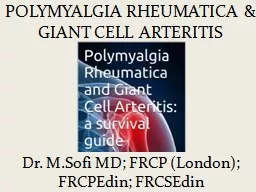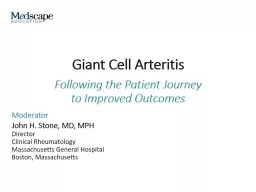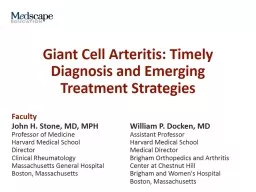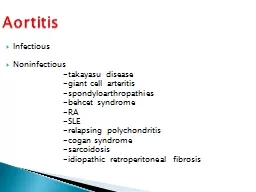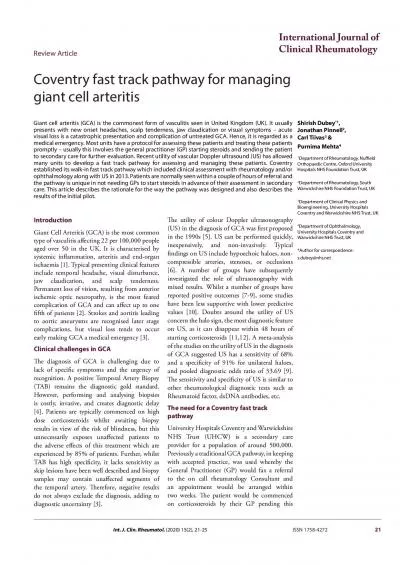PPT-POLYMYALGIA RHEUMATICA & GIANT CELL ARTERITIS
Author : danika-pritchard | Published Date : 2020-04-04
Dr MSofi MD FRCP London FRCPEdin FRCSEdin Polymyalgia Rheumatica Polymyalgia rheumatica is an inflammatory disorder that causes muscle pain and stiffness
Presentation Embed Code
Download Presentation
Download Presentation The PPT/PDF document " POLYMYALGIA RHEUMATICA & GIANT CELL..." is the property of its rightful owner. Permission is granted to download and print the materials on this website for personal, non-commercial use only, and to display it on your personal computer provided you do not modify the materials and that you retain all copyright notices contained in the materials. By downloading content from our website, you accept the terms of this agreement.
POLYMYALGIA RHEUMATICA & GIANT CELL ARTERITIS: Transcript
Download Rules Of Document
" POLYMYALGIA RHEUMATICA & GIANT CELL ARTERITIS"The content belongs to its owner. You may download and print it for personal use, without modification, and keep all copyright notices. By downloading, you agree to these terms.
Related Documents

